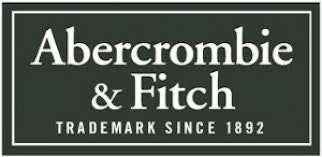
The company has recently suffered a lapse in sales due to inventory shortages rather than decreased demand. Management is confident that this is just a one-off event and will not be repeated in subsequent quarters. Furthermore, the fact that consumer confidence is returning bodes well for the company as its target market will increasingly start to buy its clothes instead of the less expensive options. This will occur since Abercrombie is seen as a commodity rather than a necessity among the majority of its following.
Abercrombie & Fitch Co. (NYSE:ANF) also has an incredibly loyal and status-conscious core following which it can always rely on for revenue. Its brand image is very important and is very recognizable among specific young age groups. Although the company high pricing strategy is high risk, especially considering the current economic climate, it is also one which will provide high returns over the long term.
While Abercrombie operates in a very specific area of the clothing market, it has faced increased competition due to the recession, as consumers have been encouraged to choose clothes they need rather than want. Its core competitors include American Eagle Outfitters (NYSE:AEO) and The Gap Inc. (NYSE:GPS).
American Eagle Outfitters (NYSE:AEO) is primarily involved in selling denim, something that has served it well in the past. The company has managed to return more from investments than it incurs in cost of capital time and time again, which is indicative of its popularity with its clients. Abercrombie & Fitch Co. (NYSE:ANF) has recently revamped its denim line, however, which based on recent financial data is shoppers are very partial to.
The Gap Inc. (NYSE:GPS) is the most well known of the bunch, offering affordability where the other competitors offer exclusivity. The company has done fairly well during the recession due to customers “trading down” in their clothing choices as their financial situations have weakened. Now the economy is improving, however, only time will tell how many of The Gap Inc. (NYSE:GPS)’s customers start trading back up to brands such as Abercrombie & Fitch Co. (NYSE:ANF).
Financials
Over the last year, Abercrombie stock price has steadily risen after bottoming out at $28.64 at the start of August. The company currently sits at a share price of $47.55, 16% off its 52-week high of $55.23. The company’s current share price equates to a market capitalization of $3.72 billion.
Abercrombie reported trailing earnings of $3.08, leading to its price-to-earnings ratio of 15.43. Its earnings are expected to rise to $3.94 by 2015, and consequently its forward price-to-earnings ratio is just 12.07. The company’s trailing price-to-earnings ratio of 15.43 is below the industry average of 19.6, suggesting that its stock is priced as a discount.
Abercrombie & Fitch Co. (NYSE:ANF) has a price to book of 2.1, well below the average of 4.7, while its price to sales of 0.9 is also lower than the 1.2 enjoyed by the average clothing company. Abercrombie also stacks up well against its key competitors.
Gap’s price-to-earnings ratio of 17.6 is marginally above Abercrombie’s. Its price-to-book ratio of 6.7 and its price-to-sales ratio of 1.4 are also well in excess of Abercrombie & Fitch’s.
American Eagle Outfitters (NYSE:AEO) has a slightly better price-to-earnings ratio of 15.1, but it trails Abercrombie in price-to-book and price-to-sales ratios with figures of 3.0 and 1.1 respectively.
Abercrombie’s balance sheet oozes strength. The company has $556 million in excess cash, and enjoys just $15 million of short-term debt. It also has a long-term debt of just $131 million leading to a debt/equity ratio of less than 0.1. The company has $728 million in net working capital (current assests-current liabilities), a great deal of operating liquidity, while its net working capital ratio of 2.36 is demonstrative of its financial security. A look through the cash flows reveals a trailing operating cash flow of $585 million, of this just under half, some $278 million was spent on capital expenditures, increasing the firm’s investments in its future.
Comparative Analysis
Abercrombie & Fitch has a trailing earnings before interest, taxes, depreciation, and amortization (EBITDA) of $622 million, allowing us to calculate its trading multiple (market cap/EBITDA) of 5.98 times. We can find the enterprise value (EV) by adding the market cap of $3.72 billion with the total debt of $146 million and then subtracting the cash of $556 million. This gives us an EV of $3.310 billion, and consequently and EV/EBITDA of 5.32 times. The fact that this number is below the trading multiple is indicative of the financial strength on the firm.
| Enterprise Value ($bn) | EBITDA ($bn) | EV/EBITDA TTM | |
| Abercrombie & Fitch | 3.310 | 0.622 | 5.32x |
| American Eagle | 3.094 | 0.508 | 6.09x |
| Gap | 19.597 | 2.632 | 7.45x |
| Ross Stores | 13.735 | 1.503 | 9.14x |
| Urban Outfitters | 5.442 | 0.517 | 10.53x |
From the comparative analysis, it is clear that the company is currently priced at a discount. Having said this, even though the weak quarterly sales are not expected to last or have long term consequences, we can never certain. Overall, I believe Abercrombie & Fitch Co. (NYSE:ANF) to be a good long term investment but I invite you to make your own choice.
The article One Bad Quarter Should Not Consign Abercrombie to the Gallows originally appeared on Fool.com and is written by Rupert Nicholson.
Rupert Nicholson might initiate a position in Abercrombie & Fitch in the next 24 hours. The Motley Fool has no position in any of the stocks mentioned. Rupert is a member of The Motley Fool Blog Network — entries represent the personal opinion of the blogger and are not formally edited.
Copyright © 1995 – 2013 The Motley Fool, LLC. All rights reserved. The Motley Fool has a disclosure policy.




